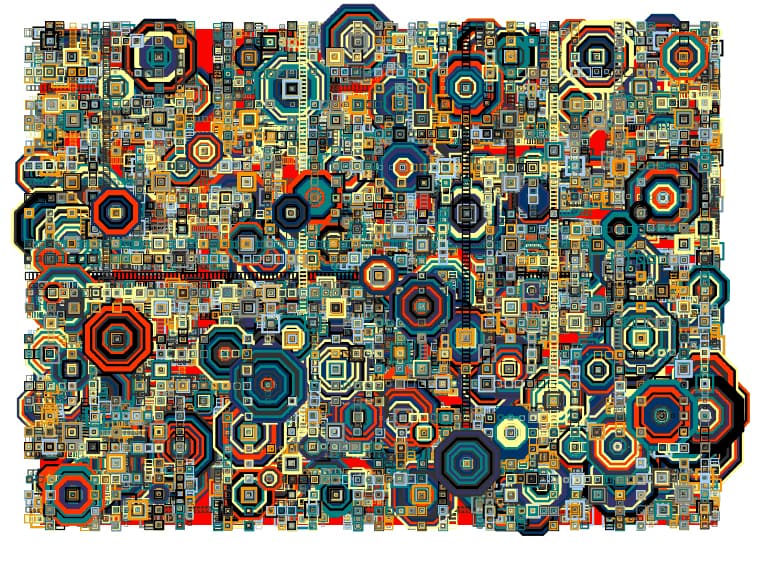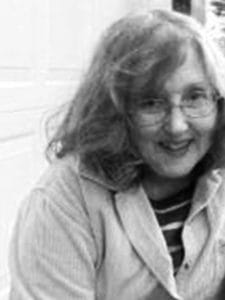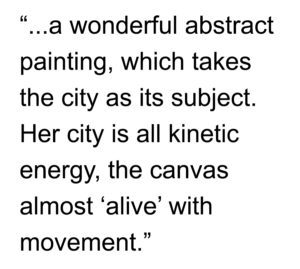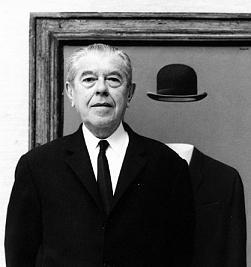
“They don’t know what you’re doing, Babe, it must be art.”
– Hold Me, Thrill Me, Kiss Me, Kill Me, U2
Algorithmic Space | The City in Art
by Dr. Mark David Major, AICP, CNU-A
Don Relyea’s Cityscape with Helipads and Ladders (2011) uses an algorithm based on the Hilbert space filling curve, discovered by mathematician David Hilbert. The version of Relyea’s program subdivides spaces within the total space to be filled and runs the algorithm to fill the smaller spaces separately. Each smaller space is centered on a point on the curve causing the smaller renderings to intersect the larger one in interesting ways. The program recursively draws rectangles along the curve. At certain times during the execution, it draws larger concentric rectangles and connects special points with trailed concentric rectangles (Source: www.donrelyea.com).
 I am not even going to pretend to understand the mathematics of what Relyea is describing, except in only the vaguest sense. I’m sure Dr. Nick “Sheep” Dalton and Dr. Ruth Conroy Dalton would understand the mathematics of Relyea’s generative algorithm, and I will get them to explain it to me the next time I see them. For those interested in the mathematics of the algorithm, there is more information available here. However, purely in terms of art, Relyea’s generative algorithm appears to capture something of the “organized complexity” of the city, which is, no doubt, why Relyea decided to appropriately title his computer-generated art series as “cityscapes”. In addition to this generative complexity, Relyea’s prints also capture something of the repetitiveness of city space, which Relyea varies through his use of color (see the entire series to date here). It is suggestive there are more practical applications for his generative algorithm in urban modeling and science, beyond that of generating complex shapes for artistic reasons. However, based purely on artistic terms, the result is a compelling abstract image of repetitive complexity.
I am not even going to pretend to understand the mathematics of what Relyea is describing, except in only the vaguest sense. I’m sure Dr. Nick “Sheep” Dalton and Dr. Ruth Conroy Dalton would understand the mathematics of Relyea’s generative algorithm, and I will get them to explain it to me the next time I see them. For those interested in the mathematics of the algorithm, there is more information available here. However, purely in terms of art, Relyea’s generative algorithm appears to capture something of the “organized complexity” of the city, which is, no doubt, why Relyea decided to appropriately title his computer-generated art series as “cityscapes”. In addition to this generative complexity, Relyea’s prints also capture something of the repetitiveness of city space, which Relyea varies through his use of color (see the entire series to date here). It is suggestive there are more practical applications for his generative algorithm in urban modeling and science, beyond that of generating complex shapes for artistic reasons. However, based purely on artistic terms, the result is a compelling abstract image of repetitive complexity.
 About Don Relyea
About Don Relyea
Don Relyea graduated from Southern Methodist University in 1992, where he was a print making major and information systems major and a merit scholarship student. He lives and works in Dallas Texas USA with his wife and three kids. Upon graduation, Relyea immersed himself in the multimedia software industry producing video and interactive CD content and eventually games for publishers and clients. In the multimedia industry, he developed a love for programming graphics on computers and now produces art in several media both traditional and digital. Relyea focuses in the area of computational art. He writes his own custom art software in C++ and Open GL. Many of the programming techniques Relyea learned in game development he now employs with his art, primarily producing prints and video art. He often weaves cultural, social and political dimensions into his work. Nature and mathematical forms are also common subjects. His print and video work have been in exhibited in galleries and juried exhibitions all over the United States. Recently, Relyea’s video art has been installed outdoors in curated/juried shows in Oslo, Norway, The Hague, the Digital Graffiti Festival at Alys Beach Florida, W hotel in Seoul Korea and International Free Exchange Zone in Incheon Korea (Source: www.donrelyea.com).
The City in Art is a series by The Outlaw Urbanist. The purpose is to present and discuss artistic depictions of the city that can help us, as professionals, learn to better see the city in ways that are invisible to others. Before the 20th century, most artistic representations of the city broadly fell into, more or less, three categories: literalism, pastoral romanticism, and impressionism, or some variation thereof. Generally, these artistic representations of the city lack a certain amount of substantive interest for the modern world. The City in Art series places particular emphasis on art and photography from the dawn of the 20th century to the present day.





 About Kathleen Patrick
About Kathleen Patrick

 Olga Rozanova’s City (1916) is a wonderful abstract painting, which takes the city as its subject. Her city is all kinetic energy, the canvas almost ‘alive’ with movement. Her painting builds on the Cubist tendency to compress time and space into a single glance at a subject, which conveys a plenitude of information to the viewer. This, in itself, builds on the earlier Impressionist technique, which included movement as a crucial element of human perception and experience in the painting. However, in the case of Cubism, it is not the movement of human perception that depicted in the painting but rather the movement and energy inherent in the subject itself across time and space, which is both compressed and captured in the representation. Olga Rozanova’s City is a brilliant look at
Olga Rozanova’s City (1916) is a wonderful abstract painting, which takes the city as its subject. Her city is all kinetic energy, the canvas almost ‘alive’ with movement. Her painting builds on the Cubist tendency to compress time and space into a single glance at a subject, which conveys a plenitude of information to the viewer. This, in itself, builds on the earlier Impressionist technique, which included movement as a crucial element of human perception and experience in the painting. However, in the case of Cubism, it is not the movement of human perception that depicted in the painting but rather the movement and energy inherent in the subject itself across time and space, which is both compressed and captured in the representation. Olga Rozanova’s City is a brilliant look at 


 We can say this with some confidence because if you were to remove all of the ‘painted light’ from this painting, only a black canvas would remain. It is this ‘painted light’ that provides a subtle richness and contextual depth to the best of O’Keeffe’s cityscape paintings. Later, we will see more explicit examples in her other paintings, for example in The Shelton with Sunspots (1926). In this sense, the subject is the artifice of form emerging from the arrangement of light. The fact the words ‘Radiator Building’ and ‘New York’ are in the title of the painting is completely inconsequential and accidental to the subject of the piece. It is also misleading on O’Keeffe’s part by naming the painting in this manner. However, this is completely consistent with her tendency to be opaque when it comes to the subject matter of her own paintings. As architects and planners, O’Keeffe’s painting shows us how we can expand our perception of the city beyond the conventional (form) to see its richness in other, more subtle – and, perhaps, richer – ways (light).
We can say this with some confidence because if you were to remove all of the ‘painted light’ from this painting, only a black canvas would remain. It is this ‘painted light’ that provides a subtle richness and contextual depth to the best of O’Keeffe’s cityscape paintings. Later, we will see more explicit examples in her other paintings, for example in The Shelton with Sunspots (1926). In this sense, the subject is the artifice of form emerging from the arrangement of light. The fact the words ‘Radiator Building’ and ‘New York’ are in the title of the painting is completely inconsequential and accidental to the subject of the piece. It is also misleading on O’Keeffe’s part by naming the painting in this manner. However, this is completely consistent with her tendency to be opaque when it comes to the subject matter of her own paintings. As architects and planners, O’Keeffe’s painting shows us how we can expand our perception of the city beyond the conventional (form) to see its richness in other, more subtle – and, perhaps, richer – ways (light).



 is demonstrating the line between individuality and group association, and how it is blurred. All of these men are dressed the same, with the same bodily features and all are floating/falling. This leaves us to look at the men as a group (Source: Wikipedia).
is demonstrating the line between individuality and group association, and how it is blurred. All of these men are dressed the same, with the same bodily features and all are floating/falling. This leaves us to look at the men as a group (Source: Wikipedia). About Rene Magritte
About Rene Magritte